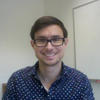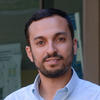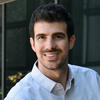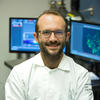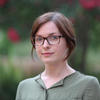Fourteen UC Riverside faculty members have received highly coveted National Science Foundation CAREER Awards. The number shatters UCR’s record for CAREER Awards set only last year.
CAREER Awards are given to faculty members to fund research that is expected to form a firm foundation for a lifetime of leadership in integrating education and research. They support early career faculty who have the potential to serve as academic role models and lead to the advancement of their organization’s mission.
UC Riverside’s 2021 CAREER Award recipients and the projects funded by the award are listed in alphabetical order below.
Salman Asif (Electrical and Computer Engineering) As cameras move beyond consumer photography and become widely used for sensing and understanding new environments, new ways of programming and building them are required. Asif’s project seeks to develop novel methods to sense and process visual information while considering the constraints and requirements on data, sensors, algorithms, and tasks in the real world.
Anson D’Aloisio (Physics and Astronomy) During the Epoch of Reionization, the first galaxies formed and the hydrogen gas between them was ionized. D’Aloisio will develop software to simulate this epoch to better understand star formation in the earliest galaxies. The project will also enlist undergraduate students and build a radio telescope for astronomy education and outreach.
Ahmed Eldawy (Computer Science and Engineering) Eldawy’s project describes basic research towards building an end-to-end system that allows data science students and domain scientists to interactively explore spatio-temporal datasets. The overarching goal is to enable data science on geospatial data for students, domain scientists, and citizen scientists.
Konstantinos Karydis (Electrical and Computer Engineering) Karydis’ project seeks to make autonomous legged robots more efficient and resilient in their operation, unlocking legged robots’ full potential in precision agriculture. The project investigates how compliance embedded into a legged robot can be harnessed to facilitate control and computation to enable efficient and resilient navigation in real agricultural fields.
Daniel Koenig (Botany and Plant Sciences) Koenig’s project will study how barley, one of the world’s staple foods, might survive climate change. His work will reveal details about genetic adaptations barley has made in the past to enable its survival over thousands of years. These details will also help steer its future as weather becomes more extreme.
Yujie Men (Chemical and Environmental Engineering) Men’s project seeks to understand how the presence of micropollutants affects the development, proliferation, and transmission of antibiotic resistance under environmentally relevant conditions. She will track the induction of antibiotic resistance in microorganisms exposed to micropollutants through a novel combination of chemistry and molecular biology to understand the genotype-to-phenotype relationships that underpin the development and transmission of antibiotic resistance.
Joshua Morgan (Bioengineering) Cellular senescence, when cells can no longer divide, is an important component of wound healing, cancer, and aging. Senescence is known to spread from cell to cell, but how this occurs is not understood. Morgan’s project seeks to identify the role of stiffness and mechanical force in spreading senescence from cell to cell.
Samet Oymak (Electrical and Computer Engineering). Oymak’s project will help enable machine learning methods to operate with less human-annotated data, less computing power, and on a wider range of hardware platforms. He will develop algorithms to facilitate the design of machine learning models under application-specific resource constraints. The resulting algorithms will be used to design efficient models to predict and manage water resources.
Evangelos Papalexakis (Computer Science and Engineering) Papalexakis’ project seeks to improve autonomous tensor analysis towards actionable insights from raw multi-aspect data, with applications for detecting misinformation online and detecting gravitational waves. He aims to democratize unsupervised exploratory tensor analysis — making it more accessible while producing actionable insights from the data.
Chengyu Song (Computer Science and Engineering) Software vulnerabilities are major threats to cybersecurity. Concolic execution, or dynamic symbolic execution, is a powerful program analysis technique to find vulnerabilities. Song aims to advance the scalability of concolic execution via machine-learning-guided path pruning and fast path constraint collection and solving.
Flip Tanedo (Physics and Astronomy) The properties of dark matter remain a tantalizing mystery; discovering the masses and interactions of the dark matter particles would illuminate the cosmological history of the known universe. Tanedo will lead an ambitious research program to develop new theories of dark matter that can explain why it has eluded our laboratory tests and show how upcoming experiments may reveal its properties.
Peng Wei (Physics and Astronomy) Wei’s project will improve quantum computing by utilizing a kind of exotic quantum particles, known as Majorana fermions, that are indistinguishable from their antiparticles. This unique property allows construction of the basic element of quantum computing, a quantum bit or qubit, using a pair of coupled Majorana fermions, which can produce a new type of qubit that is naturally protected from decoherence.
Daniel Wong (Electrical and Computer Engineering) Wong’s project will design accelerated cloud data centers that are performance-efficient, resource-efficient, and cost-efficient. Wong will develop software frameworks to measure and identify the causes of inefficiencies in accelerated cloud data centers and improve their communication and interconnection. The results could improve application performance, improve hardware resource utilization, and reduce energy consumption, which would reduce the carbon footprint of data centers.
Hollis Woodard (Entomology) Bumblebee queens start off as solitary insects, looking for a place to nest. After finding a spot, the queen lays eggs and collects food to feed the brood. This continues until the first group of workers hatch and take over the queen’s food gathering and feeding duties. Woodard’s group will do experiments to find out whether there are genes that regulate key moments in the life of queens as they find their nests.

